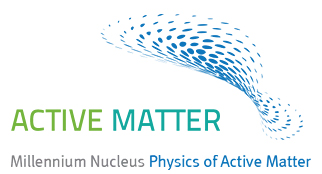Felipe Barra, who is a researcher at the Millennium Nucleus Physics of Active Matter and an academic at the University of Chile, has found the conditions that allow energy to be stored in quantum batteries while preventing it from dissipating. This may have implications for the creation of technologies that, in the future, will allow processes that now take months or years to be ready just in seconds.
Decades ago, microchips revolutionized technology and electronics, allowing the creation of more compact and efficient devices, but today they are pushing those limits. Changing the current technological architecture to one based on quantum mechanics could be the answer, as it would bring revolutionary changes in the size and speed of devices.
However, this requires quantum batteries, which, unlike conventional batteries, are subatomic systems that store energy on a tiny scale based on their own rules, and thanks to their ability to superpose themselves, they can deliver energy faster than a classical battery. This has great potential for future computing and data processing, among other areas.
Felipe Barra, a researcher of the Millennium Nucleus Physics of Active Matter and an academic at the Department of Physics of the University of Chile (DFI-FCFM), has been studying for five years how to create more efficient quantum batteries that do not waste or lose energy and able to deliver this energy to a device as quickly as possible.
 Disconnect and reconnect
Disconnect and reconnect
Dr. Barra and his team of researchers proposed to extract that energy from a system in thermodynamic equilibrium. In other words, a system incapable of suffering a spontaneous change in it. A fact that can “protect” the contained energy and prevent it from being lost.
However, the laws of thermodynamics say that this is impossible to achieve since any manipulation of a system in equilibrium
will cause the spending of energy, and we won’t be able to return the system to its equilibrium state.
Nevertheless, the University of Chile academic found a way to “twist” this law, noting that if the system in equilibrium intensely interacts with its environment, it could extract energy from it if it manages to separate itself from its environment.
“For example, if we have an atom in equilibrium with the light surrounding it, that atom will store quantum energy that we can extract if the interaction between them is intense, but to do that, we have to first disconnect the atom from the light and then, after extracting the energy, reconnect it to the light,” Dr. Barra says.
“This is how the atom returns to its thermal equilibrium state and recharges its energy,” he said.

“We have shown that it is possible to store energy in a system in thermodynamic equilibrium since this state does not lose energy to maintain itself because it is protected, so the energy is not dissipated and could be used later for a quantum device,” he said.
Bottom line: while disconnecting and reconnecting the atom to its medium expends energy, the energy extracted in the process is more complex to achieve and allows the atom to become a quantum battery.
“In simple words, the energy we need to disconnect and reconnect our atom is cheap energy. But the energy we extract from the system and store in the battery (atom) is more difficult to obtain and can be useful for a quantum device,” explains Dr. Barra.


